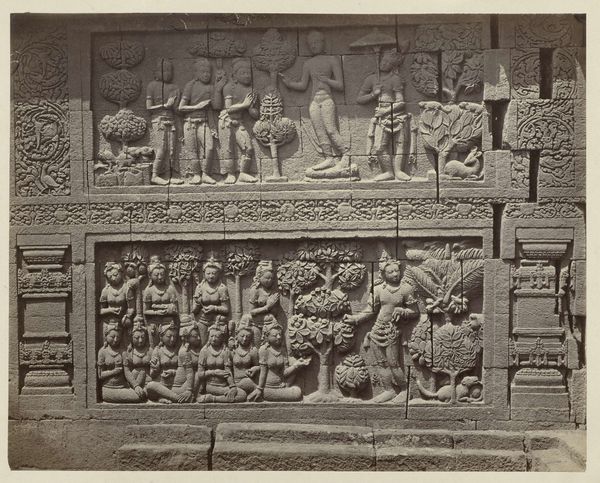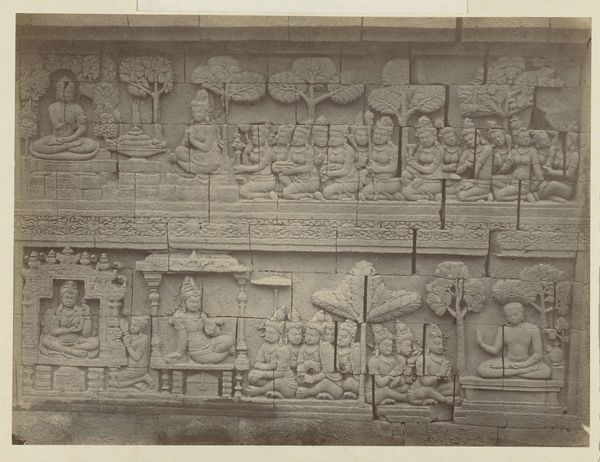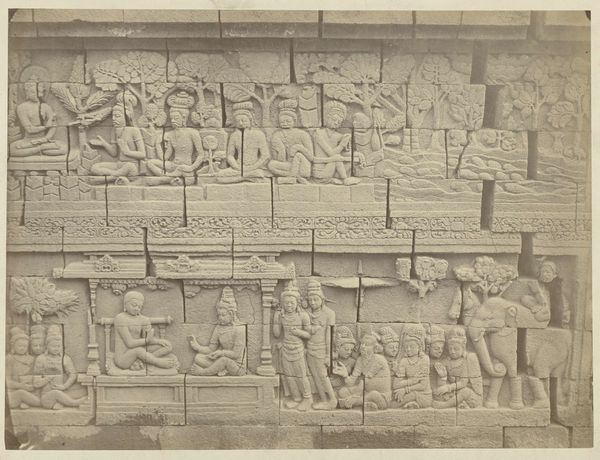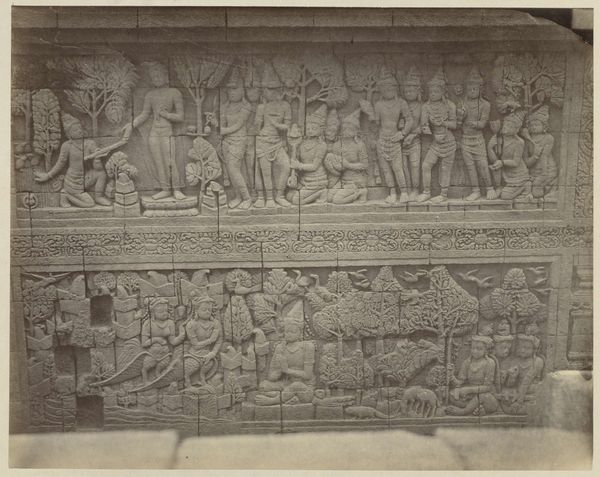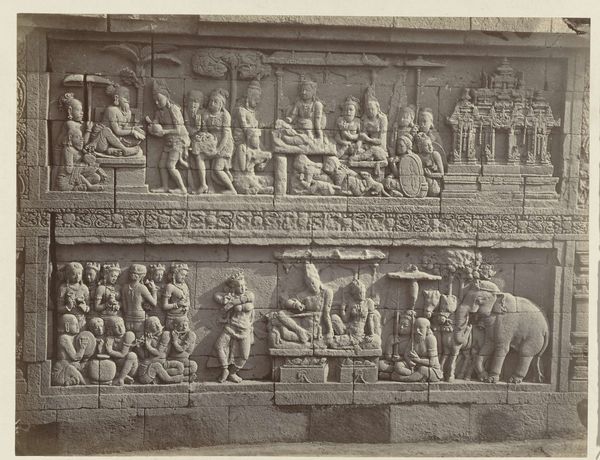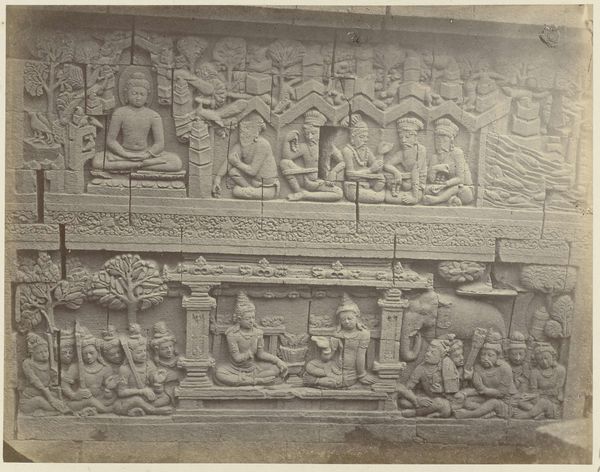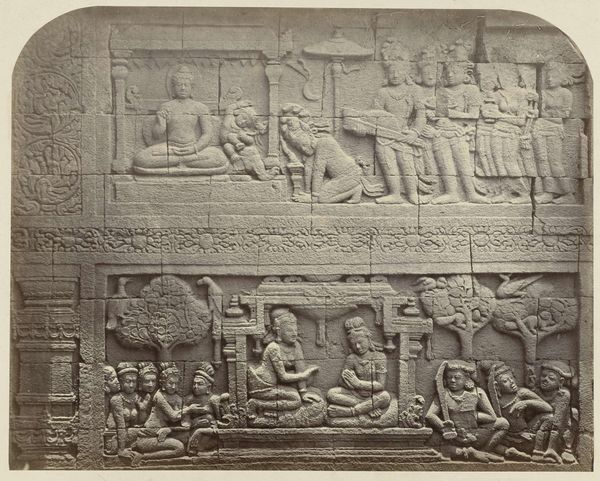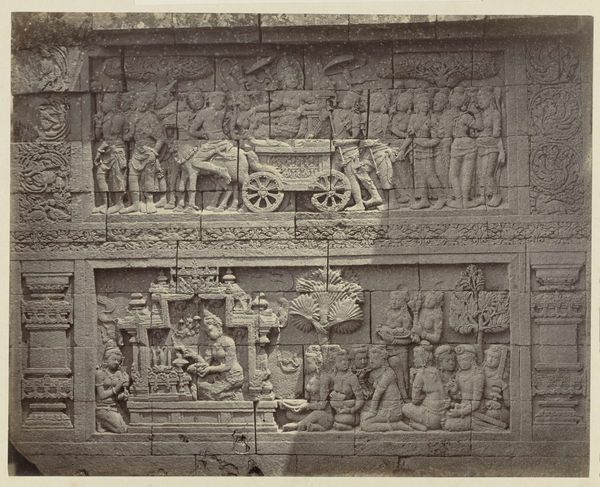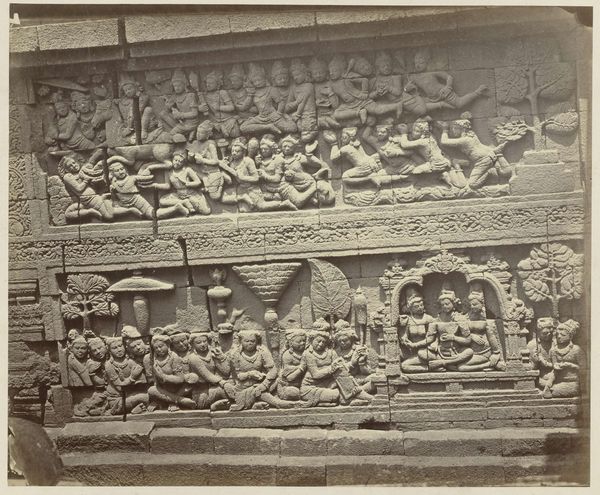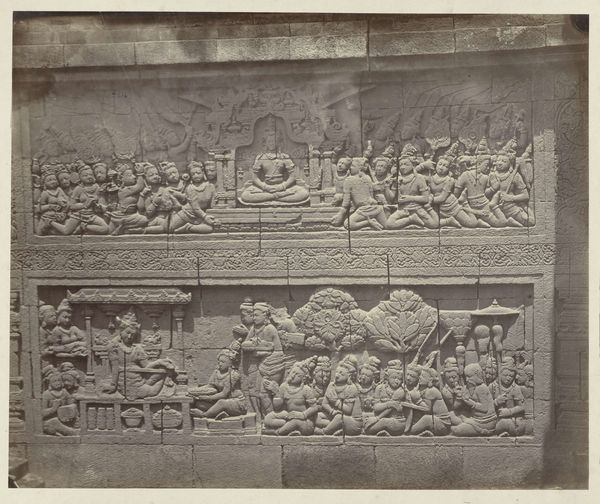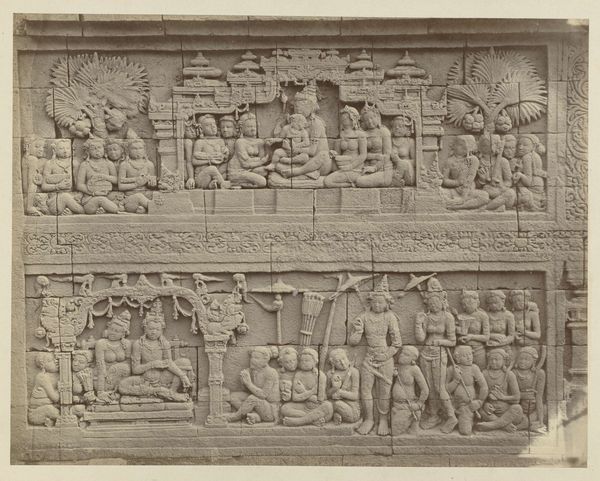
carving, print, relief, photography
#
carving
# print
#
asian-art
#
relief
#
landscape
#
figuration
#
photography
#
carved into stone
#
history-painting
Dimensions: height 300 mm, width 400 mm
Copyright: Rijks Museum: Open Domain
Curator: Before us is a photographic print titled "Reliëf in de muur aan de noordzijde van de Borobudur" attributed to Isidore Kinsbergen, likely captured between 1873 and 1879. It captures a relief carving at the Borobudur temple. Editor: It's remarkably detailed. Even in this image, the density of the carving creates a visual texture that's almost overwhelming. The light and shadow accentuate the various planes, offering a play between surface and depth that is, frankly, captivating. Curator: Indeed. Kinsbergen's photograph serves as documentation but also an interpretation. Notice how the framing emphasizes the tiered arrangement of the narrative scenes. This echoes the structure of Borobudur itself, a monument designed to guide pilgrims through progressive stages of enlightenment. The act of photographing reliefs also implies the context of colonialism where there was this urgent need to document the "exotic". Editor: Speaking purely visually, that central figure in the top register—the one in meditative pose—serves as an anchor, doesn't it? The eye constantly returns to it amid the bustling narrative below. This creates a visual hierarchy where chaos gives way to order, like thoughts settling in meditation. Curator: Precisely! One could suggest the photographer here has subtly created an additional, modern, layer of Buddhist engagement via selection of a central image to invite contemporary observation, as opposed to religious engagement. These historical images help show the development of the monument as it transitioned to what we observe today. The selection of these kinds of reliefs and carvings give clues as to their perceived significance at this early stage in its 'discovery' Editor: And while these figures seemingly act as actors, as players in historical Buddhist parables, their relationships, through pose, and the rhythm created by their positioning creates a language within itself. It creates an alphabet of form, don't you think? The constant reiteration of round, oval and geometric shapes help draw you in. Curator: True, but the photo also hints at the monumentality and the place the Borobudur had in the colonial imagination. Early photography served to re-enforce racial biases which photography such as Kinsbergen's reinforces through its existence and documentation. It leaves one contemplating questions around history, cultural understanding and aesthetic appreciation in this single photograph. Editor: The experience has allowed us to explore levels within these photographed carvings. From photographic art, architectural photography, semiotic art and historical narrative, hopefully giving listeners further insight and deeper observation into such photograph prints of reliefs.
Comments
No comments
Be the first to comment and join the conversation on the ultimate creative platform.
